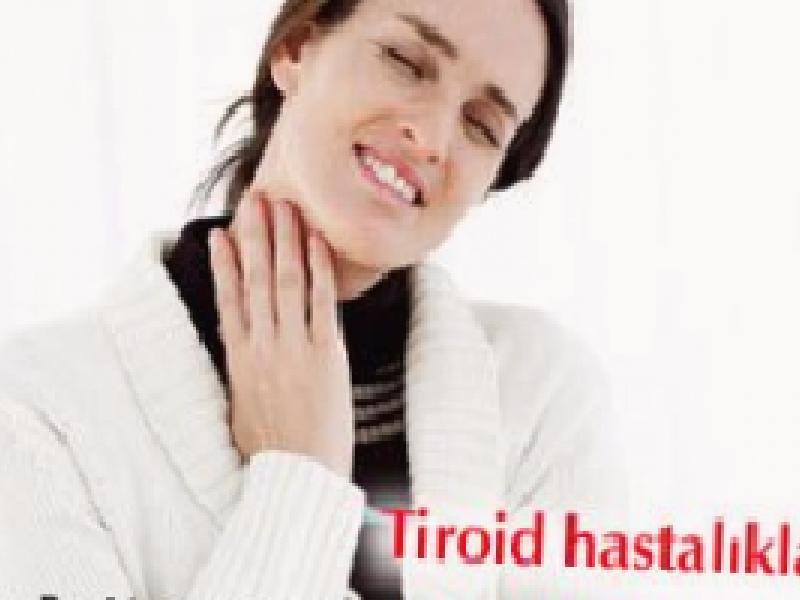This 20-gram small thyroid gland, which wraps the windpipe in the shape of a horseshoe, just below the protrusion we call the Adam’s apple, at the front of the neck, accomplishes very large tasks compared to its size. We can list them as follows;
1) It regulates body temperature, water requirement and oxygen use of the body.
2) It is effective in the use of fat, sugar and protein together with other hormones.
3) It is effective in the coordinated work of the muscle and nervous system.
4) It has an important place in the development of children.
5) It has spiritual regulatory effects.
The diseases of this very important organ, which I mentioned in the previous issues, which we call basal metabolism, which regulates the amount of energy required to maintain our vital functions (such as heart rate, body temperature, breathing, kidney and liver work) in a 12-hour fasting and resting state, are not to be underestimated. Thyroid gland diseases, which we see at a rate of 30% in the society, but which many of us do not even realize, are more common in women than in men.
The existence of physiological periods in which women’s hormones change a lot and, so to speak, are upset, is effective in the fact that thyroid diseases are more common in women than in men. Intense hormonal activity in women during the transition to young maidenhood, pregnancy and menopause affects the thyroid gland directly and indirectly, and the disease can occur during these periods as well as the existing disease is activated during these periods.
Diseases of the thyroid gland are generally structural or functional. These two main groups of diseases can exist together or separately. Structural diseases of the thyroid are determined as nodule goiter (nodular goiter) and non-nodular growth (diffuse goiter). If there is more than one nodule, then we refer to the disease as multinodular goiter.
Thyroid function diseases, on the other hand, are in the form of working too much or too little. When the thyroid gland works too hard, that is, it secretes too much hormone into the blood, it is called hyperthyroidism (toxic goiter). In this case, hot flashes, rapid heartbeat (palpitations), heat intolerance, weakness, trembling in the hands, outward swelling of the eyes occur. Underactive condition is also called hypothyroidism. When this develops; Complaints such as hair loss, fatigue, dryness of the skin, forgetfulness, weakness, and tendency to sleep are seen.
Since we stated that the disease is structural and functional, it is essential to evaluate both aspects when making a diagnosis. Since it is seen even in childhood, in the presence of functional complaints or a swelling in the neck, which I mentioned above, it is necessary to evaluate the thyroid hormones T3 and T4 with a blood test in terms of function and to measure the TSH (thyroid stimulating hormone) value, which controls the functioning of the thyroid. In addition to these blood tests, we should look at the thyroid with thyroid ultrasonography for structural evaluation. We can measure thyroid hormones at any time of the day. So we don’t have to starve for a certain period of time.
Goiter, which we call thyroid disease, is closely related to our iodine intake. For this reason, we should pay attention to insufficient or excessive use of iodine intake. The iodized salts on the market are important in this regard. In addition, iodine intake from seafood is very rich. The amount of iodine in grain products that we consume in excess is not sufficient. Some edible foods (eg kale in the Black Sea region) and substances in drinking water in some regions bind iodine, causing iodine deficiency and thyroid diseases. In addition to iodine deficiency or excess, familial transmission and even stress, the famous problem of our age, can cause thyroid diseases.
Treatment of diseases of the thyroid gland, which secretes hormones that affect all functions of our body, gives very satisfactory results.
With medical treatments for functional diseases, improvement is achieved in this direction, and even small nodules below 2 cm can be destroyed with medical treatment to a certain extent.
In structural diseases, if there is nodule, it is necessary to be under the control of an endocrine diseases, internal medicine or general surgery specialist. Because, in the presence of nodule, the structure and number of the nodule determines the treatment options. Resistance to nodule-oriented treatments and the size of the nodule may bring the surgical treatment option to the fore. Medication may be required to prevent recurrence of the nodule after surgical treatment or to prevent thyroid insufficiency, which we call hypothyroidism.
In addition to these, I would like to briefly talk about malignant tumors of the thyroid gland. There are 5 types of thyroid cancers that we encounter more frequently recently. However, we come across two of them very often. Thyroid cancers, which can cure 80-90% with surgical treatment, especially when caught in the early period, are no longer a fearful dream for people who have regular control.
To summarize, it will be sufficient to evaluate ourselves a little to recognize the disease of this very important organ, which affects our entire life, from brain functions to sexual life, from body temperature to weight and even our mood. Unexplained weight loss, palpitations even when inactive, trembling in the hands, excessive sweating, excessive nervousness, hyperactivity, sexual reluctance, diarrhea, weight gain even with little food, constipation, extreme fatigue, weakness, tendency to sleep, palpable swelling in the neck are all warning signs. may be a sign.
Let’s not forget that if we turn away from the worries of our daily life and turn to ourselves, the voice of our body will definitely warn us for our health and happiness. Let’s listen to this voice.
Stay healthy.

